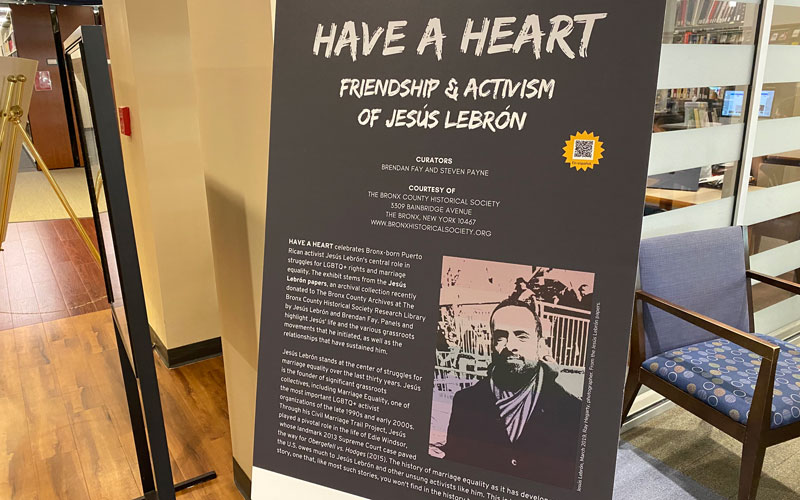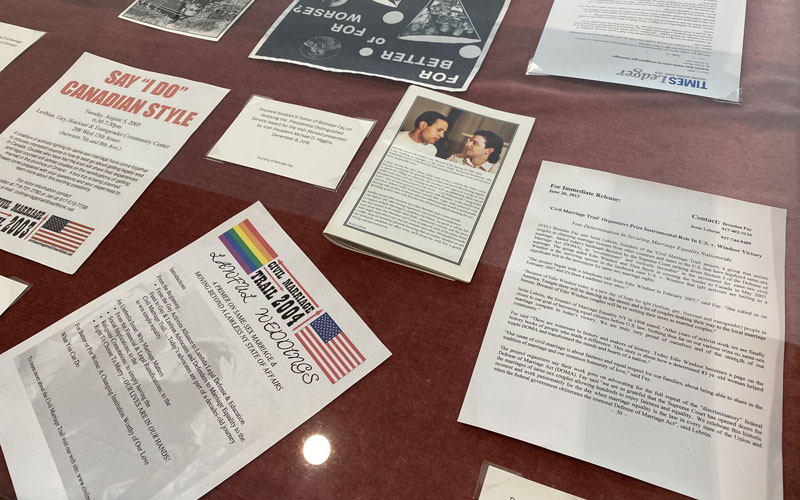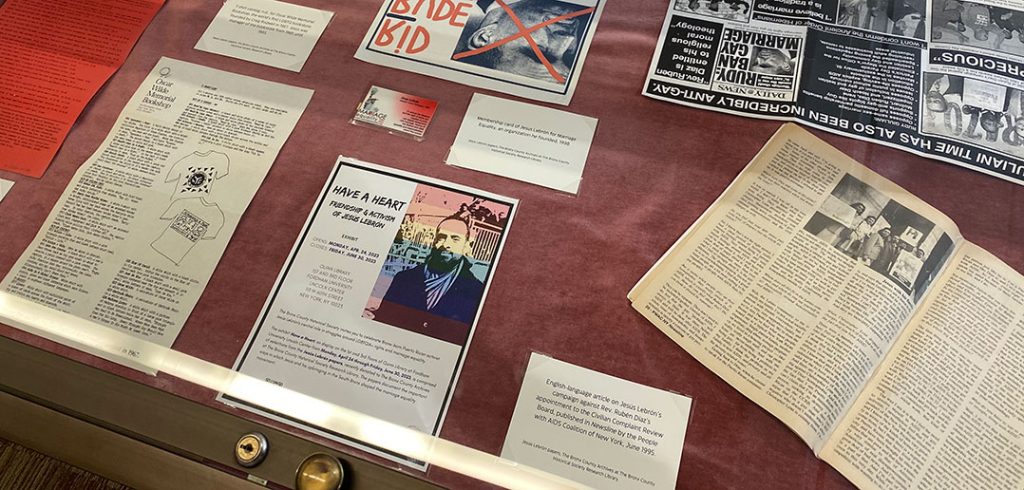His story is now on display at Quinn Library at Fordham’s Lincoln Center campus in a new exhibit “Have a Heart: Friendship and Activism of Jesùs Lebròn.” Lebròn donated his papers, artifacts, and more to the Bronx County Historical Society Research Library, where the exhibit was first displayed. It was curated by his friend and fellow activist Brendan Fay, as well as Steven Payne, director of the Bronx County Historical Society, who received his Ph.D. at Fordham in 2019.
Professor Karina Hogan, who helped bring the exhibit to Fordham, saw it first at Bronx Community College and said seeing it and speaking to Lebròn and Fay afterwards had a huge impact on her and the development of her Religion in NYC course.
“It was transformative for me,” she said. “I thought, ‘Oh it would be so cool to try to get the exhibit here because it’s so related to what I was teaching in my class.’”

Fighting Against the Defense of Marriage Act
The exhibit tells the story of Lebròn, who was born in the South Bronx, and how his work impacted LGBTQ rights in the U.S. In 1985, he became the manager of the Oscar Wilde Memorial Bookshop in Greenwich Village in Manhattan, which was the first to sell LGBTQ-themed books. It was there that he met Fay, who became a friend and fellow activist in fighting for LGBTQ+ rights.
Lebròn got involved locally, starting Gay & Lesbian Advocates for Change, the first group in New York to ask political candidates about their stance on gay marriage. Following the passage of the Defense of Marriage Act in 1996, Lebròn co-founded an organization called Marriage Equality, which grew to more than 40,000 members across various states, and organized educational and political campaigns. He led all of these efforts despite being diagnosed in 1991 with AIDS, which he’s lived with ever since.
The Civil Marriage Trail
In 2003, Lebròn and Fay started the Civil Marriage Trail Project, which helped LGBTQ couples travel to Canada—and eventually Massachusetts and Connecticut—to marry where it was legal. One of the couples who used the trail was Edie Windsor and Thea Spyer. After Spyer died in 2009, Windsor’s legal efforts for her wife’s estate traveled to the Supreme Court, which ruled in her favor in United States v. Windsor in 2013. That case laid the groundwork for Obergefell v. Hodges two years later which legalized marriage equality.

Local History, National Impact
Hogan said that she hopes the exhibit will help students and community members understand the connections between local history and national impact.
“We owe a lot to these two guys, especially to Jesùs Lebròn, who was this kid who came up out of poverty in the South Bronx,” she said. “They had such a huge impact on American history and nobody even knows about it.”
The exhibit was opened at the Ignatian Q conference and will be on display at the library through the end of June.


